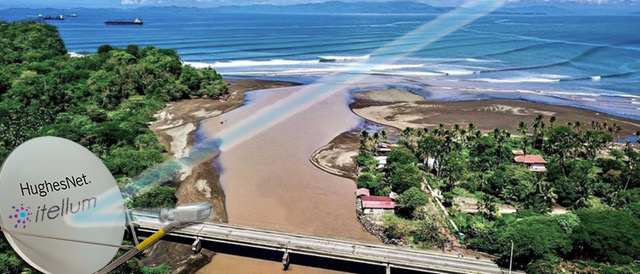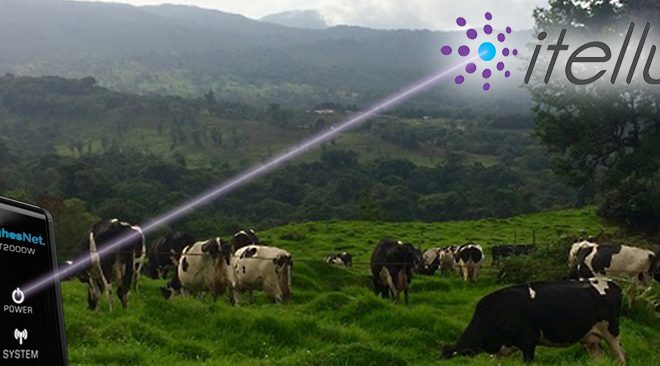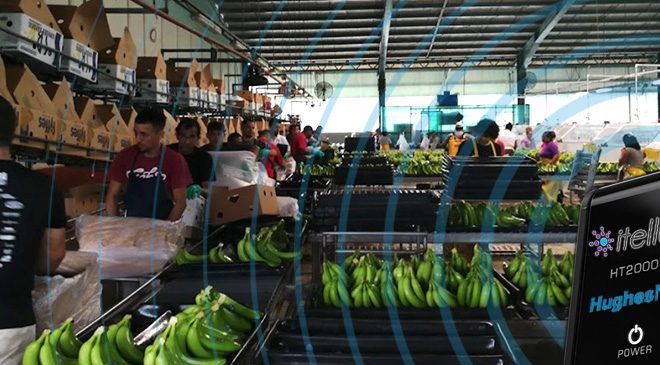DSL, Cable Internet, Fiber Optic, and Satellite. What’s the difference?
It’s no secret that the internet has become a staple in our everyday lives. We rely on it for work, school, socializing, and entertainment. Much of our everyday pubic services depend to some extent on stable, consistent internet connectivity. And as our dependence on the internet grows, so does the need to understand the types of services available. We’ve come a long way since dial-up however, DSL and Cable internet have been the “go-to” connection for many years. Based in Costa Rica, iTellum is an internet service provider that offers both fiber optics and satellite internet to its customers. But what’s the difference between these four systems? And how do they work? And do they provide superior internet better than their predecessors? Let’s explore a bit more.
Not all of us are technicians so oftentimes we “glaze over” when a qualified professional tries to explain how these things work. We’ll try here to define the differences and how they affect the service you receive.
First, let’s talk about DSL (in Costa Rica ADSL) and Cable Internet.
DSL is delivered via copper telephone lines and since this infrastructure already exists only minor upgrades are needed to provide the service using a DSL modem. It may not be the fastest connection but is prevalent in many areas. Speeds may be acceptable for most households, but it should be noted that the further the connection is away from the hub, the weaker the signal will be causing decreased speed and reliability. Cable internet uses coaxial cable used in cable tv companies’ wired networks. Cable networks can achieve higher speeds through the use of special gigabit modems. However, during peak hours of heavy internet traffic, the service can suffer from loss of bandwidth because that bandwidth is shared amongst other users. This can slow down speeds causing buffering when watching streaming video.
Fiber Optic internet is a whole different ballgame.
Like DSL and Cable, Fiber Optic internet is wired but with a totally different type of cable. The cable uses light instead of electric impulses and is constructed of thousands, maybe even millions of tiny strands of glass and plastic that could be described as being hair-like, hence the name fiber. These fibers are encased in a cladding that reflects the light and keeps it from “leaking” out. The transmission of light is incredibly faster than the electrical impulses of DSL and cable. Electrical impulses deteriorate as they travel a distance from their source and the light of fiber internet does not. It can travel long distances and using optical amplifiers along the way, solves the problem of data loss. Everything on the internet is based on a language of “zeros” (0) and “ones” (1) and we don’t want to lose any of them!
But not all fiber optic connections are created equal. It is the final step of connecting the user to this faster, better stronger internet that can make all the difference. There has to be a way to connect the fiber cable to the user and in many cases, the existing copper wire telephone or cable TV network is used, slowing down the entire process which has been super fast up until this point. Think of it as a huge army of ants traveling super fast in a formation a mile wide and then all of a sudden having to funnel into a pipe an inch in diameter! There are several final step connections, but let’s look at three of the most common here:
Fiber to the premise (FTTP): The most direct connection, establishes a fiber connection from beginning to end with no copper wiring. Introducing this new final infrastructure for each endpoint becomes an expensive option for the ISP.
Fiber to the neighborhood (FTTN): The fiber cable ends at a hub close to its general end destination and then connects individual user locations via copper cable. This allows the fiber optic connection to be shared however, due to the use of copper cable, those at a further distance from the hub may receive slower speeds.
Fiber to the building (FTTB): This option is used for multiple endpoint buildings, apartment complexes, industrial parks, and the like. The end user can be connected via FTTP or FTTN and maybe a combination of the two. The fiber cable runs directly to the building where a distribution hub resides. From there it may be connected through pre-existing copper wiring or even better, an internal fiber network connection residing within the building.
This is where iTellum rises to the challenge. Internet via 1:1 International Fiber Optics is their forte! With their professional installations, the fastest & most reliable internet in Costa Rica is achievable. Of course, every installation should always involve a visit to the location to see what exists as the current infrastructure. From there is it determined how the final steps of installation will be performed. For ISPs, this is where pricing in the final part of the installation can affect their costs and therefore your installation fee.
On to internet via satellite and how it all happened.
This technology has seen “astronomical” growth since science fiction author, Arthur C. Clarke first wrote about it in 1945. Twenty years later Hughes Aviation, (of the infamous Howard Hughes) launched the first commercial satellite. Since then HughesNet adopted the name and has developed systems to improve speed, viability, and efficiency. In 2022 iTellum brought High-Throughput Satellite Broadband to Costa Rica via the HughesNet satellite, Jupiter2. This might be considered a “Quantum Leap” in communications for the country opening up rural areas to reliable satellite internet and broadband that couldn’t be achieved previously.
But how does the satellite signal get to you? We already know that the previous systems discussed are wired. DSL and Cable systems come from a central location and are distributed to you using copper wire through a system of hubs along the way to their final destination. We also know that there can be some data loss during the journey, the longer the distance that data has to travel. Consider the satellite in space as the central location. There are no wires because the satellite transmits to HughesNet’s central locations and then your dish picks that signal up and it is transmitted to your internet devices — all wirelessly. For example; you type in a web address, the modem sends that to your dish that in turn sends your request to a HughesNet central location, that “Beams it up Scotty” to the satellite and the satellite sends it back to you all in a fraction of a second! This gives the end user the best satellite broadband possible in Costa Rica.
There are some misconceptions about satellite technology that originate from the past. Gone are the days when satellite dishes were huge and had to be moved to transmit and receive signals. Communication satellites move with the earth’s rotation so your dish remains stationary and you and the satellite are always in sync. Today, the Jupiter2 system technology ensures “clean” communications eliminating data loss even at times of heavy usage. Before this state-of-the-art system, satellite communication could be interrupted by adverse weather conditions like rain, heavy cloud cover, and high winds that we experience in Costa Rica. This is no longer a concern since data is transmitted through more powerful radio waves called Ku band waves, ramping up the speed and lessening data loss.
This means iTellum has brought Costa Rica’s only high-speed satellite internet to 97% of the country opening up the availability of rural satellite internet to areas where it is needed despite the county’s geographic diversity and challenging terrain.
We hope this helps to understand the world of internet connectivity, the differences that exist in the networks available, and the misconceptions of the past.







